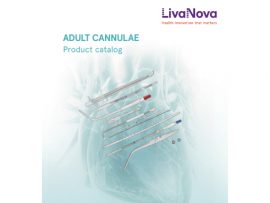Abstract The optimal arterial cannulation site in minimally invasive cardiac surgery (MICS) remains debated. While axillary, femoral, and central approaches each offer distinct advantages, no prior network meta-analysis has compared..
Read MoreAbstract OBJECTIVES Peripheral cannula selection in minimally invasive cardiac surgery (MICS) is crucial, as venous drainage limitations during cardiopulmonary bypass (CPB) can impair end-organ perfusion and overall outcomes. This study..
Read MoreAbstract OBJECTIVES Peripheral cannula selection in minimally invasive cardiac surgery (MICS) is crucial, as venous drainage limitations during cardiopulmonary bypass (CPB can impair end-organ perfusion and overall outcomes. This study..
Read MoreMinimally invasive mitral valve repair (MICS) with neochords combines a precise surgical technique with an advanced perfusion strategy to optimize outcomes. The minimally invasive approach can be performed routinely, delivering..
Read MoreAbstract Background The adoption of minimally invasive cardiac surgery (MICS) has increased over the past 25 to 30 years, driven by advancements in technology and a growing understanding of its..
Read MoreAbstract Background: Although the use of protocols for "enhanced recovery after surgery" (ERAS) have been associated with improved results in different surgical specialties, only a few data are available for ERAS..
Read MoreCURRENTLY, MINIMALLY INVASIVE cardiac surgery (MICS) is very popular. In most cases, cardiopulmonary bypass (CPB) is used with femoral arterial cannulation, and the whole body is perfused in a retrograde..
Read More





